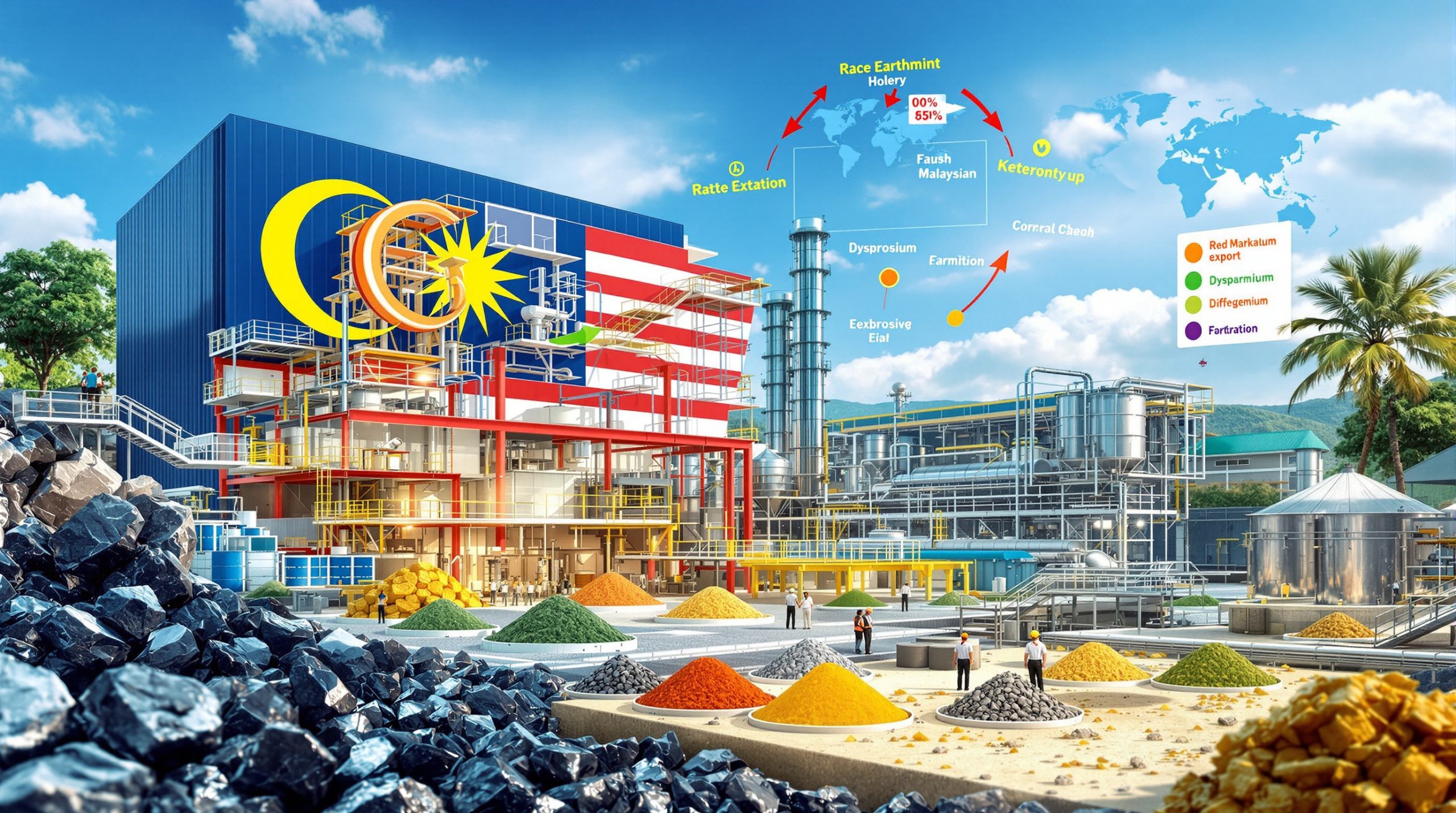Chevron's Strategic Reentry into Iraq: Navigating Geopolitical Complexities in a Transforming Oil Landscape
The energy landscape in Iraq is witnessing a significant transformation as U.S. oil giant Chevron establishes a renewed foothold in the country's petroleum sector. In August 2025, Chevron signed a preliminary agreement with Iraq's Oil Ministry, marking a pivotal moment in the company's long-pursued strategy to secure upstream operations in federal Iraq. This agreement, signed under the auspices of Prime Minister Mohammed Shia al-Sudani, represents Chevron's most substantial commitment to Iraq's energy sector after previous unsuccessful attempts to enter the market.
The agreement centers on developing the massive Nasiriyah oil field in southern Dhi Qar province, along with four exploration blocks and the Balad oil field north of Baghdad. This strategic move positions Chevron to tap into Iraq's vast hydrocarbon potential while navigating the complex geopolitical landscape that has deterred many Western energy companies in recent years.
What Historical Challenges Has Chevron Faced in Iraq?
Chevron's journey in Iraq has been marked by persistent ambition countered by recurring setbacks. The company's relationship with Iraq's energy sector began in the early 2010s through investments in the semi-autonomous Kurdistan region, where it acquired stakes in the Sarta, Rovi, and Qara Dagh exploration blocks. These investments represented Chevron's first significant presence in Iraqi territory following the 2003 U.S.-led invasion.
However, the Kurdistan experience proved disappointing. Beginning in 2015, Chevron initiated a gradual withdrawal from the region as projects failed to meet performance expectations:
-
2015: Relinquished stake in the Rovi block due to underperforming wells
-
2023: Exited the Sarta block after disappointing drilling results
-
2023: License for Qara Dagh block expired, ending Chevron's Kurdistan presence
In federal Iraq, Chevron's attempts to secure development rights for the Nasiriyah field date back to 2009, when it competed against other international oil companies including Italy's Eni, Spain's Repsol, and Japan's Nippon Oil. These negotiations collapsed over disagreements about commercial terms, with Baghdad's rigid fiscal framework proving unacceptable to Chevron and other Western companies.
Between 2020 and 2021, Chevron made another serious attempt to enter Iraq's federal upstream sector, engaging in discussions about potential development opportunities in the Nasiriyah region. Despite initial optimism, these talks ultimately faltered over commercial and technical terms, highlighting the persistent challenges in Iraq's approach to international energy partnerships.
What Makes the 2025 Agreement Different?
The 2025 agreement represents a fundamental shift in Iraq's approach to engaging with international oil companies. Prime Minister al-Sudani has emphasized that his government has "adopted a new approach in dealing with major international oil companies, especially American ones," suggesting recognition that previous negotiating strategies had been counterproductive.
Several factors distinguish this agreement from previous attempts:
-
Broader Portfolio: The agreement extends beyond the Nasiriyah project to include multiple exploration blocks and the Balad oil field, providing Chevron with geographic diversification.
-
Improved Commercial Terms: While specific terms remain undisclosed, Iraqi officials have indicated more flexible and commercially attractive arrangements that better recognize the risks and capital requirements of major upstream development.
-
High-Level Political Commitment: The signing ceremony in Baghdad, attended by senior officials including Iraq's Oil Minister and Chevron's Vice President, signals strong political backing from both sides.
-
Improved Security Environment: Iraq's enhanced stability has reduced operational risks, making long-term investments more viable.
-
Strategic Alignment: Both parties recognize the mutual benefits of partnership amid intensifying global competition for energy resources and influence.
What Are the Technical Specifications of Chevron's Iraqi Assets?
The Nasiriyah field represents one of Iraq's most promising underdeveloped assets, with proven reserves of approximately 4.36 billion barrels of recoverable oil. Current production operates at a relatively modest 70,000-90,000 barrels per day, constrained primarily by limited infrastructure rather than geological limitations.
Technical assessments suggest that with appropriate investment in enhanced recovery technologies and expanded surface facilities, the field could support production levels of up to 300,000 barrels per day, potentially sustainable for fifteen years or longer. This would transform Nasiriyah into a major contributor to Iraq's overall oil output.
The field's geological characteristics present favorable conditions for development:
-
Good reservoir quality with favorable porosity and permeability
-
Conventional extraction techniques applicable
-
Significant quantities of associated gas that could provide additional revenue streams
The Balad oil field presents different challenges, particularly related to security. Located in Salahuddin province north of Baghdad, the field's proximity to areas that experienced significant conflict during Iraq's post-invasion insurgency necessitates enhanced security measures and specialized operational protocols.
Why Is This Deal Geopolitically Significant?
Chevron's return to Iraq occurs within a context of intensifying geopolitical competition for influence in the Middle East's energy sector. China has systematically expanded its presence in Iraq's energy landscape through strategic agreements and infrastructure investments, fundamentally altering the competitive environment.
Chinese companies now hold significant positions across Iraq's energy value chain, with involvement in between half and two-thirds of Iraq's current oil production through various investor, producer, and service provider roles. This extensive presence provides Beijing with substantial influence while creating dependencies that can be leveraged for broader strategic objectives.
Russia has pursued parallel efforts to expand its influence through energy partnerships and security cooperation, often offering package deals that combine energy investment with security assistance and diplomatic support.
Against this backdrop, Chevron's agreement represents more than a commercial transaction—it embodies a strategic effort by the United States to reassert influence in a region critical to global energy security. The timing coincides with broader shifts in global energy geopolitics:
-
European countries seeking to reduce dependence on Russian energy
-
Asian economies continuing to grow their energy consumption
-
Iraq's position as a major producer with capacity for significant production increases becoming increasingly valuable
From Iraq's perspective, the agreement reflects a sophisticated strategy of diversification and hedging, seeking to benefit from competition among major powers while avoiding excessive dependence on any single partner.
How Does This Fit Into Broader Western Energy Company Returns to Iraq?
Chevron's deal is part of a broader pattern of Western energy companies returning to Iraq after a period of withdrawal. This resurgence includes:
-
TotalEnergies' $27 Billion Deal: The French energy giant signed a massive agreement encompassing oil field development, gas capture infrastructure, and solar energy projects. This deal includes the Gas Growth Integrated Project (GGIP), which will process associated gas from the Nasiriyah and nearby Gharraf fields.
-
BP's $25 Billion Investment: The British company secured rights to develop five oil fields in southern Iraq, marking its return to the country after previously scaling back operations.
-
Service Company Expansions: American oilfield service companies like SLB (formerly Schlumberger) and Baker Hughes have expanded their presence in Iraq, providing critical technical support for field development.
These investments reflect growing confidence in Iraq's stability and improved investment climate, as well as strategic concerns about countering Chinese and Russian influence in the region.
What Challenges Remain for Chevron in Iraq?
Despite the promising agreement, Chevron faces significant challenges in translating this preliminary deal into successful operations:
Governance and Transparency Issues
Iraq continues to struggle with governance challenges that complicate business operations. Transparency International has consistently ranked Iraq among the most corrupt countries globally, with particular vulnerabilities in the oil sector. While reforms have been implemented, the risk of political interference, bureaucratic delays, and corruption remains substantial.
Security Concerns
Although security has improved significantly since the height of the ISIS insurgency, operational risks persist, particularly in areas like Salahuddin province where the Balad field is located. Chevron will need to implement robust security protocols and coordinate closely with Iraqi security forces.
Contract Stability
Historical precedent suggests that contract terms in Iraq can be vulnerable to political changes and shifting government priorities. Ensuring long-term stability of the agreement will require careful relationship management and possibly international guarantees.
Infrastructure Limitations
Iraq's oil export infrastructure remains constrained, with bottlenecks in pipeline capacity, storage facilities, and port terminals potentially limiting production growth. Significant investment in these areas will be necessary to fully realize the potential of Chevron's assets.
Regional Politics
Tensions between Baghdad and the Kurdistan Regional Government over oil revenue sharing and territorial control continue to create uncertainty for energy companies operating in Iraq. While Chevron's current agreement focuses on federal Iraq, regional political dynamics could still impact operations.
What Does This Mean for Iraq's Energy Future?
Chevron's entry into Iraq's federal oil sector could catalyze broader transformation in the country's energy landscape. The company brings not only capital but also advanced technologies and management practices that could help Iraq address persistent challenges:
Gas Flaring Reduction
Iraq remains one of the world's largest gas flaring countries, wasting valuable resources and contributing significantly to greenhouse gas emissions. Chevron's experience in gas capture and utilization could help Iraq progress toward its goal of eliminating routine flaring by 2028.
Technical Capability Development
Knowledge transfer from international companies to Iraqi personnel represents a crucial aspect of long-term energy sector development. Chevron's training programs and operational standards could help build domestic technical capabilities.
Diversification Beyond Oil
While the current agreement focuses on oil development, Chevron's global portfolio includes significant investments in natural gas, petrochemicals, and increasingly in renewable energy. This expertise could eventually support Iraq's efforts to diversify its energy mix and reduce dependence on crude oil exports.
Regional Energy Integration
Successful development of Iraq's energy resources could strengthen the country's position as a regional energy hub, potentially supporting greater integration of Middle Eastern energy markets and infrastructure.
What Are the Implications for Global Oil Markets?
The development of Iraq's oil resources by Chevron and other international companies could significantly impact global oil price dynamics. Iraq currently produces approximately 4.5 million barrels per day, making it OPEC's second-largest producer after Saudi Arabia.
Full development of the Nasiriyah field alone could add up to 300,000 barrels per day to Iraq's production capacity, with additional potential from the exploration blocks included in Chevron's agreement. This increased capacity would strengthen Iraq's position within OPEC while providing additional supply flexibility to global markets.
For consuming countries, particularly in Asia where demand growth remains strongest, the development of Iraq's resources provides important supply diversification. As US‑China trade tensions continue to affect traditional supply routes and relationships, Iraq's central geographic position and vast reserves make it an increasingly important player in global energy security.
Conclusion: A New Chapter in U.S.-Iraq Energy Relations?
Chevron's return to Iraq represents a potential inflection point in the country's energy development trajectory and in U.S.-Iraq relations more broadly. After years of false starts and disappointments, the 2025 agreement offers a framework for mutually beneficial cooperation that could help Iraq maximize the value of its natural resources while providing Chevron with access to significant hydrocarbon reserves.
The success of this partnership will depend on both parties' ability to navigate the complex technical, commercial, and geopolitical challenges that have derailed previous attempts at collaboration. For Iraq, demonstrating that it can provide a stable, transparent, and commercially viable environment for international investment remains crucial. For Chevron, balancing commercial objectives with geopolitical realities will require sophisticated risk management and stakeholder engagement.
If successful, this renewed partnership could serve as a model for Western reengagement in Iraq's energy sector, potentially counterbalancing Chinese and Russian influence while supporting Iraq's economic development and energy security objectives. The stakes are high not only for the direct participants but also for regional stability and global tariff impacts.
Furthermore, as US oil production trends show signs of plateauing, strategic international investments like Chevron's Iraq deal become increasingly important for maintaining the global influence of American energy companies. Meanwhile, Iraq's openness to international investment extends beyond its traditional southern oil fields, with recent policy changes affecting Alaska drilling policy creating interesting parallels in how nations manage their strategic hydrocarbon resources.
Further Exploration
Readers interested in learning more about the evolving dynamics of Iraq's oil sector can also explore related educational content available on Oilprice.com, which offers regular analysis of global energy markets and geopolitical developments affecting the oil industry. For additional context on Iraq's changing approach to international oil companies, the Iraq Business News provides valuable insights into the country's evolving energy policy landscape.
Ready to Invest in the Next Major Mineral Discovery?
Don't miss out on potentially transformative ASX opportunities like those highlighted in this article. Visit Discovery Alert's dedicated discoveries page to see how their proprietary Discovery IQ model helps investors identify significant mineral discoveries before the broader market takes notice.




